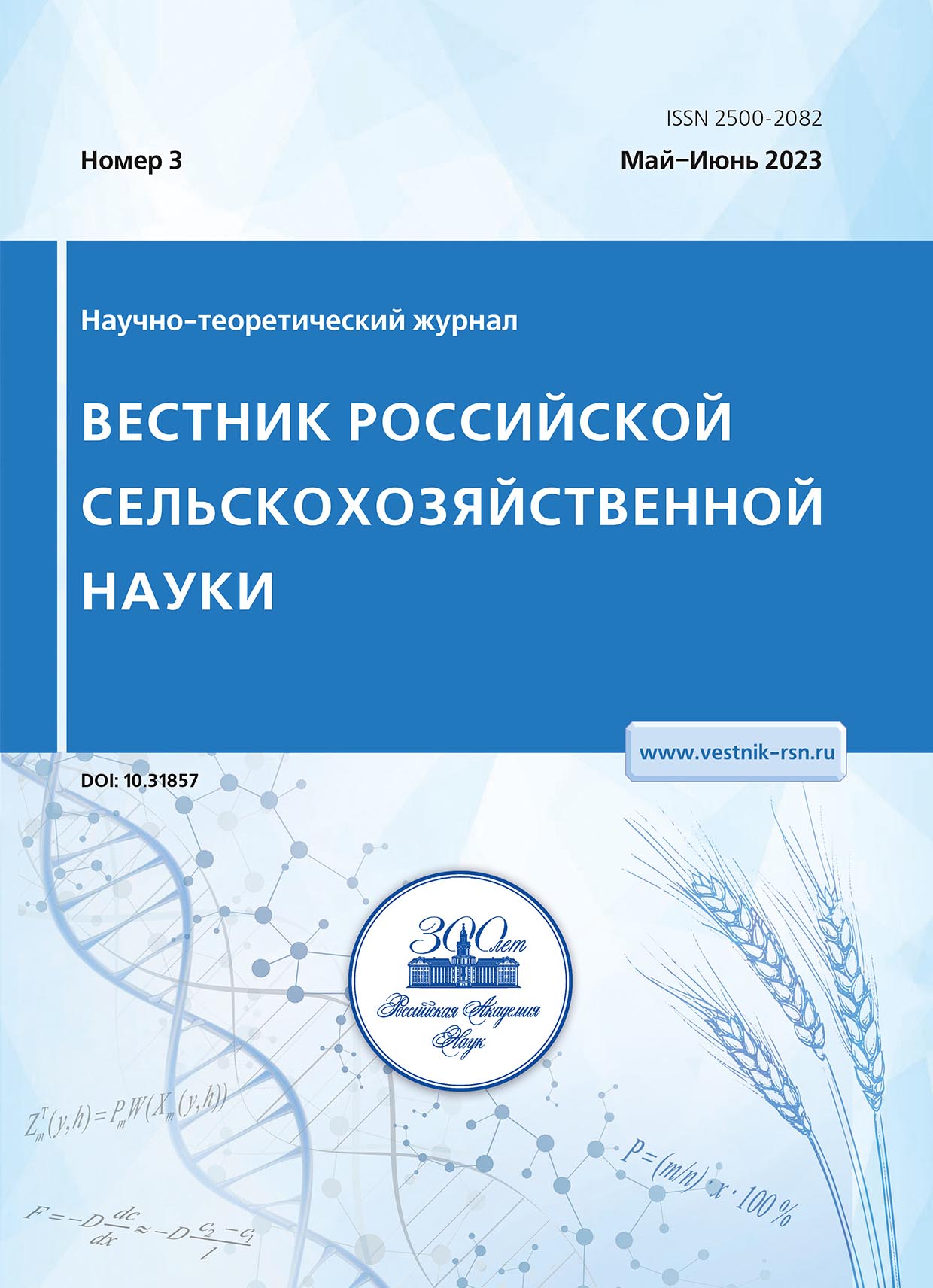SPRING WHEAT AND TRITICALE VARIETIES PRODUCTIVITY IN RISK FARMING AREA
Abstract
The studies were carried out in 2015-2022 at the Far Eastern Research Institute of Agriculture (Khabarovsk Territory). The object of study is released varieties of spring wheat (Khabarovchanka, Lira-98, Anfeya) and spring triticale (Ukro, Rovnya, Grebeshok). Agrometeorological conditions during the years of research were varied: 2015, 2016, 2019, 2022 – with excessive moisture, 2021 – insufficient precipitation, 2017, 2018 – within the average annual values. As a result of the research, it was found that under favorable conditions, the yield of triticale varieties was 45.2-79.8 centners per hectare, under the influence of limited factors, this indicator decreases by 3.6-5.0 times, and the formation of the productivity of wheat samples in the region is more stable. (average yield was 33.6-51.4 сentners per hectare). In terms of grain quality, there were differences in grain crops – wheat varieties accumulate a high amount of protein in grain (more than 15 %), triticale samples have the highest content of lysine in grain (more than 400 mg/%). It was revealed that the signs of productivity in the zone of risky farming in triticale and wheat varieties are inversely correlated with agrometeorological environmental conditions. High correlations were noted between: yield and heat in July for the triticale variety Grebeshok (r=0.75), grain size and heat in May and July for samples of triticale Grebeshok and Rovnya (r=0.74 and r=0.73 respectively), yield and amount of precipitation in June for wheat varieties Khabarovchanka and Lira-98 (r= -0.77 and r= -0.78 respectively), weight of 1000 grains and surface air temperature for variety Lira-98 (r= - 0.78).
References
2. Vladimirova E.S. Korrelyacionnyj analiz iskhodnogo materiala dlya selekcii myagkoj yarovoj pshenicy v usloviyah Central'noj Yakutii // Izvestiya Orenburgskogo gosudarstvennogo agrarnogo universiteta. 2020. № 5. S. 31-37.
3. Vorotnikov I.L., Rozanov A.V., Bogatyrev S.A., Klyuchikov A.V. Metodologicheskie osobennosti dolgosrochnogo prognozirovaniya urozhajnosti zernovyh kul'tur // Agrarnyj nauchnyj zhurnal. 2022. № 11. S. 34-37.
4. Gubanova E.V., Kochergina T.V., Hoholush M.S. Prostranstvennaya organizaciya zernovogo proizvodstva v RF // Vestnik NGIEI. 2022. № 8. S. 113-122.
5. Kincharov A.I. Taranova T.Yu., Demina E.A., CHekmasova K.Yu. Selekcionnaya ocenka priznaka massa 1000 zeren v zasushlivyh usloviyah // Uspekhi sovremennogo estestvoznaniya. 2020. № 5. S. 7-12.
6. Kim L.V., Nazarova A.A. Analiz zemel' agrarnogo sektora Habarovskogo kraya v razreze municipal'nyh obrazovanij // Mezhdunarodnyj nauchno-issledovatel'skij zhurnal. 2022. № 2. S.80-83.
7. Nazarova A.A. Agrarnyj sektor Habarovskogo kraya v sovremennyh ekonomicheskih usloviyah // Mezhdunarodnyj nauchno-issledovatel'skij zhurnal. 2022. № 8. S. 1-4.
8. Pasynkov A.V., Zavalin A.A., Pasynkova E.N., Andreev V.L. Sravnitel'naya ocenka razlichnyh metodov prognoza soderzhaniya belka v zerne pshenicy // Rossijskaya sel'skohozyajstvennaya nauka. 2021. № 3. S. 22-27.
9. Ruchkina A.V., Ushakov R.N., Elizarov A.O., Amelina T.Yu. Diskriminantnyj analiz v ocenke urozhajnosti zernovyh kul'tur na agroseryh pochvah // Vestnik Ryazanskogo gosudarstvennogo agrotekhnologicheskogo universiteta im. P.A.Kostycheva. 2020. № 1. S. 121-126.
10. Sobolev V.A., Batudaev A.P., Cybikov B.B. i dr. Vliyanie pogodnyh uslovij na urozhajnost' zernovyh kul'tur v stepnoj zone Buryatii // Vestnik Buryatskoj gosudarstvennoj sel'skohozyajstvennoj akademii im. V.R.Filippova. 2021. № 3. S. 138-143.
11. Tyslenko A.M., Zuev D.V. Ocenka sortov yarovoj tritikale Vladimirskoj selekcii po krupnosti semyan // Mezhdunarodnyj zhurnal gumanitarnyh i estestvennyh nauk. 2022. № 9. S. 49-52.
12. Shahova O.A. Osobennosti formirovaniya urozhajnosti zernovyh kul'tur v usloviyah severnoj lesostepi Tyumenskoj oblasti // Izvestiya Orenburgskogo gosudarstvennogo agrarnogo universiteta. 2020. № 6. S. 26-31.


